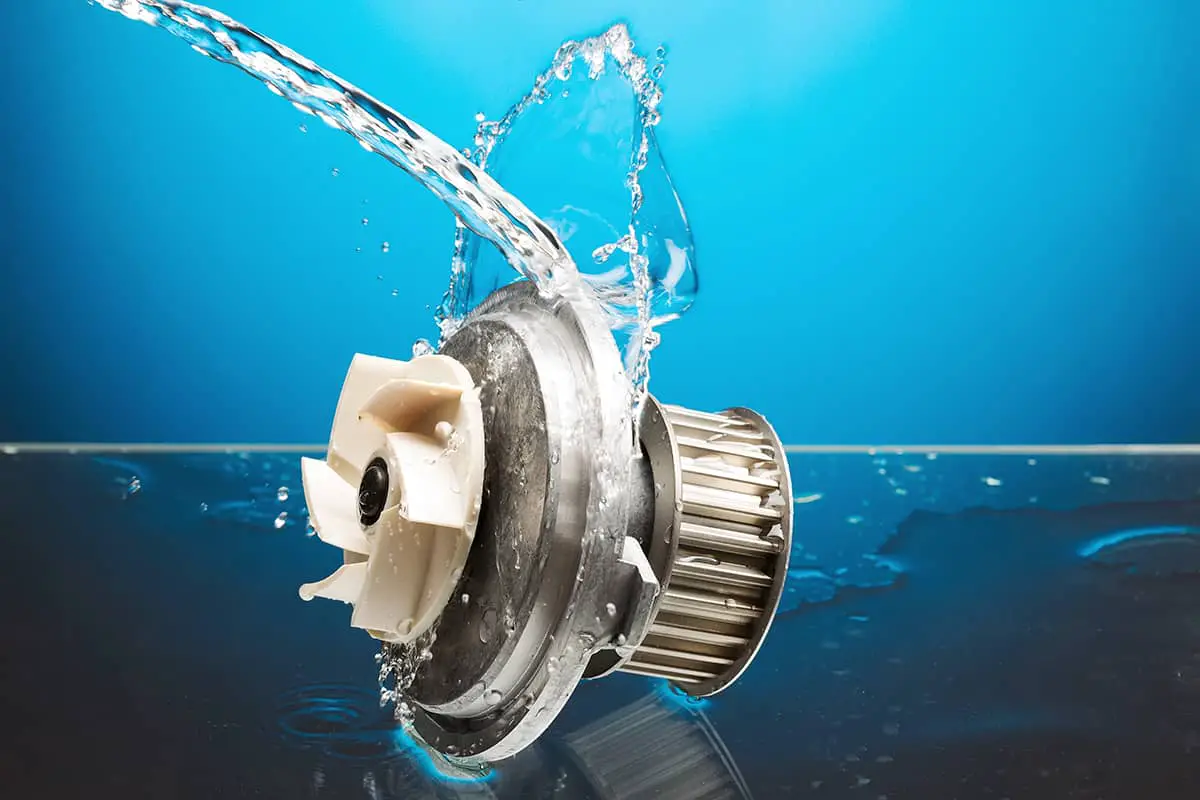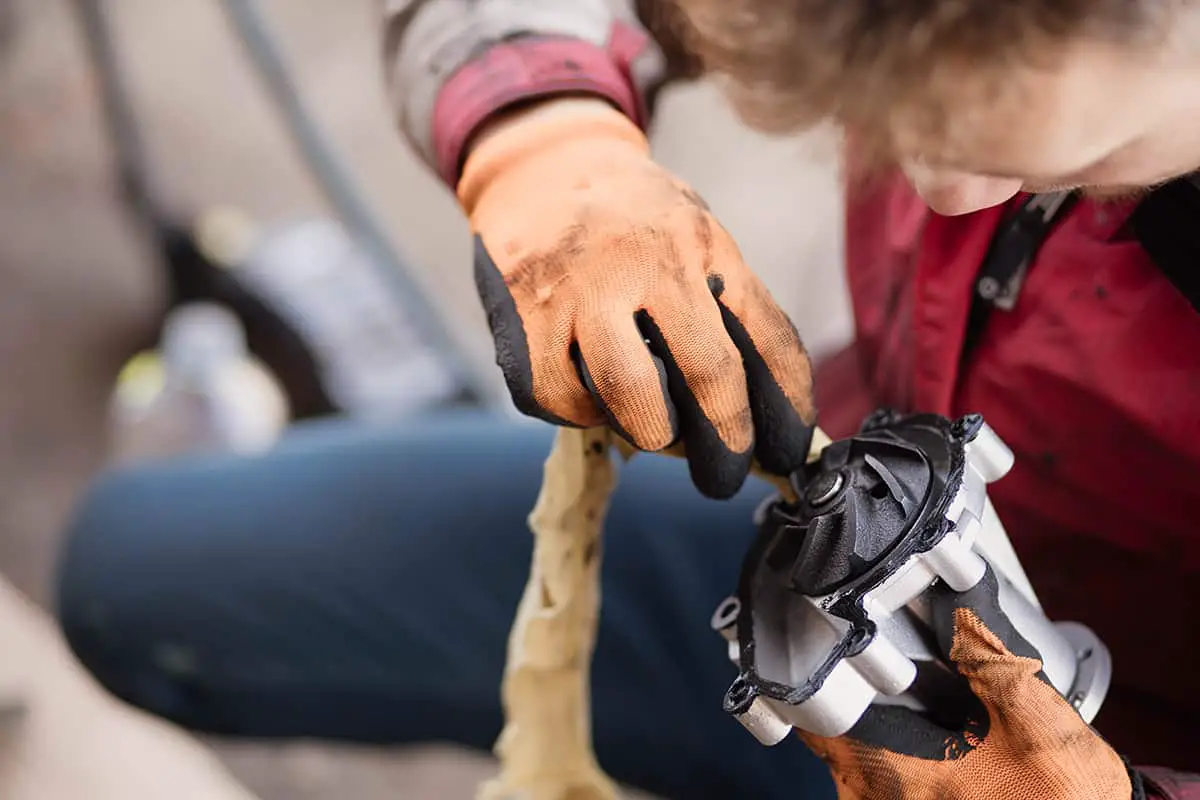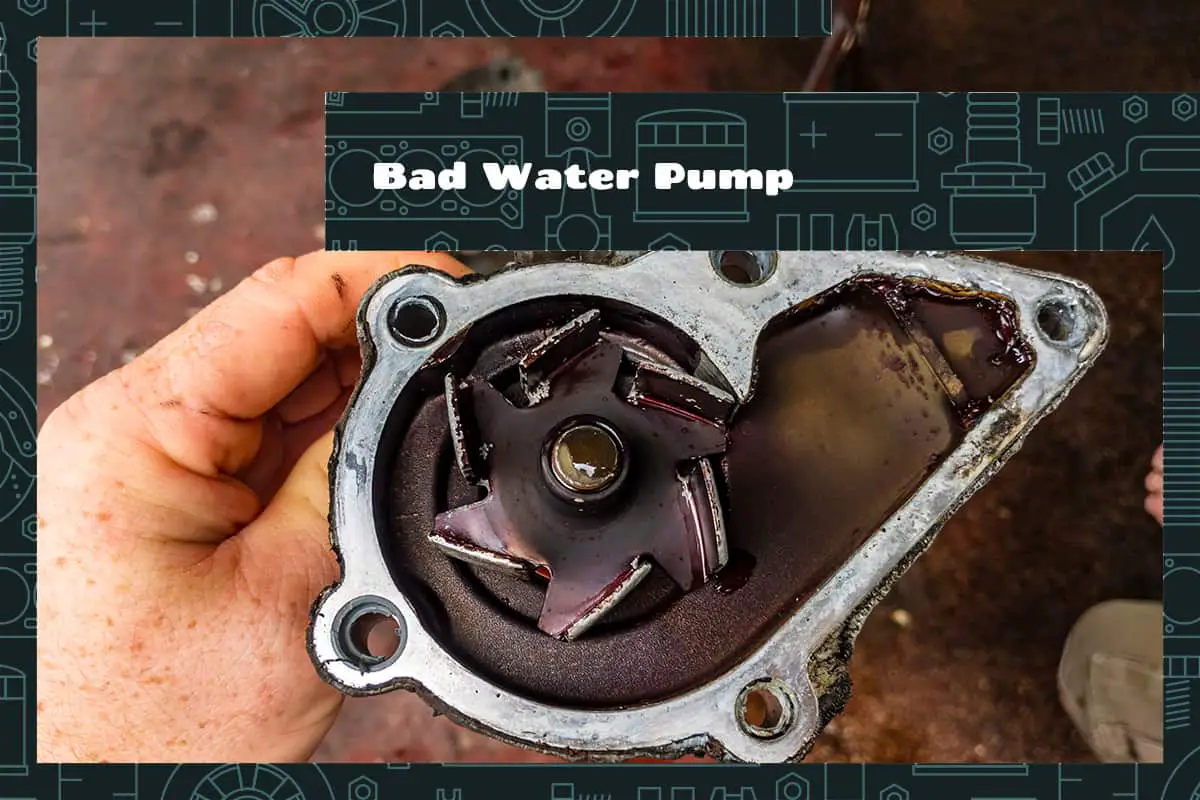The water pump holds a crucial role in the complex world of automotive mechanics. This unsung hero of your car helps regulate engine temperature by circulating coolant.
Its proper functioning keeps your car running smoothly, thus ensuring that you don’t have to face an unexpected breakdown on a lonely stretch of road. Understanding the water pump and its potential issues often get overlooked despite its essential role.
You can usually tell when your car’s water pump is faulty by looking for the following signs:
- Overheating engine
- Coolant leaks
- Whining noise from the water pump
- Steam from the radiator
Today, we will learn about the intricacies of a car’s water pump. From understanding its mechanism and replacement processes, we’ll navigate the complexities of this key component together.
What is a Car Water Pump?

The water pump, an integral part of a car’s cooling system, regulates the engine’s temperature, ensuring it doesn’t overheat. It’s a component often tucked away in the engine bay and usually doesn’t draw attention until something goes wrong.
Description of a Car Water Pump
A car water pump is a mechanical device that channels coolant from the radiator through the engine and back to the radiator. It is typically driven by the engine’s serpentine belt or timing belt, depending on the car’s make and model.
At its core, the water pump consists of an impeller, a type of rotor that draws coolant into the pump and pushes it out, ensuring its circulation through the engine block. The impeller is enclosed in a metal housing with an inlet and outlet. It’s here that the coolant enters and exits.
The Mechanics Behind the Water Pump
Now let’s dig a bit deeper into how a water pump works. When you start your car, the serpentine or timing belt that’s connected to the engine’s crankshaft also starts turning. As it turns, it drives the water pump, setting the impeller inside it in motion.
The spinning impeller draws coolant into the pump from the radiator. It then pushes this coolant into the engine block, where the coolant travels through various passages, absorbing the heat produced by the engine’s operation.
The hot coolant is then directed back to the radiator. In the radiator, it’s cooled by the air flowing through the radiator’s fins, helped by the fan when the car is idling or moving slowly. The cooled coolant then returns to the water pump, and the cycle continues.
Signs of a Bad Water Pump
You should know that they often begin subtly, slowly escalating as the water pump continues to wear out. Early detection can save both your engine and your wallet from potential disaster.
Common Symptoms of a Bad Water Pump
Here are some of the most common signs that your water pump might be going bad:
- Coolant Leak: Coolant can leak from the water pump’s weep hole, a small hole that allows coolant to escape if the water pump’s seal fails. This hole is a preventive feature designed to alert the driver of a problem before the leak reaches the bearings.
- Overheating Engine: Since the water pump’s job is to keep the engine cool, a failing pump can lead to an overheated engine. If you notice the temperature gauge creeping up, especially during low-speed drives or idling, it could mean your water pump isn’t effectively circulating coolant.
- Whining or Grinding Noises: A high-pitched whining or grinding noise from the front of your engine could signal a water pump issue. This noise is often due to a loose belt or failing water pump bearings. When bearings wear out, they create noise and often cause coolant leaks.
- Steam from the Radiator: If you see steam coming from your radiator, your engine is likely overheating. This could be due to a failed water pump not properly circulating coolant.
- Coolant Deposit or Rust: If you see rust or a greenish deposit around the water pump or on the nearby engine parts, it could indicate a slow coolant leak from the water pump.
- Erratic Temperature Gauge: If the temperature gauge fluctuates between normal and hot, it might mean the water pump is intermittently failing.
Uncommon Symptoms
While the signs above are the most common, there are other symptoms that might indicate a problem with your water pump:
- Rapidly Depleting Coolant Reservoir: If you find yourself frequently topping up your coolant reservoir without spotting any leaks, the water pump might be failing.
- Decreased Engine Performance: A failing water pump can cause a decrease in engine performance. You may notice sluggish acceleration, lower power, or decreased fuel efficiency.
Dangers of Driving with a Bad Water Pump
Continuing to drive with a bad water pump can have severe consequences:
- Engine Damage: If your engine constantly runs hot due to a failing water pump, it can lead to severe engine damage, including a blown head gasket or a cracked engine block. Both of these repairs are costly and can be prevented with timely attention to a bad water pump.
- Total Engine Failure: In the worst-case scenario, complete engine failure can occur if the engine overheats too severely or too frequently.
The Replacement Process

Although replacing a water pump can be a complex task depending on the make and model of your vehicle, knowing the process can help you gauge what’s involved and make informed decisions.
When Replacement is Necessary
Typically, replacement is necessary when the water pump shows signs of failure such as leaks, noise from worn-out bearings, or an overheating engine. Ignoring these signs can lead to catastrophic engine damage.
Some car owners also choose to replace the water pump as a preventative measure when replacing the timing belt, as the water pump is often accessible during this procedure.
Step-by-Step Guide to Replacing a Water Pump
While the exact steps can vary depending on the make and model of your car, the general process of replacing a water pump usually involves the following:
- Preparation: Gather all necessary tools and parts, including the new water pump, coolant, and possibly new coolant hoses and clamps. Make sure your vehicle is on a flat, level surface.
- Drain the Coolant: Locate the radiator drain plug, place a container underneath, and then open the plug to allow the coolant to drain.
- Remove Components for Access: This can include parts such as the serpentine belt or timing belt, pulleys, fans, and possibly even engine mounts. In some cases, this can be a labor-intensive process.
- Remove the Old Water Pump: Unscrew the bolts holding the water pump in place. If the water pump is stuck, gently tap it with a rubber mallet. It’s critical not to damage the engine block during this process.
- Clean the Mounting Surface: Before installing the new pump, it’s essential to clean the mounting surface on the engine block to ensure a proper seal.
- Install the New Water Pump: Position the new water pump and gasket (using a sealant if necessary), then reinstall the bolts.
- Reinstall Removed Components: Put back any components you removed for access in the reverse order of removal.
- Refill the Cooling System: Once everything is back in place, refill the cooling system with coolant.
- Run the Engine and Check for Leaks: Start your car and let it reach operating temperature while checking for any leaks. Also, ensure that the engine does not overheat.
Cautionary Note
While some car enthusiasts might be tempted to replace the water pump on their own, this task can be quite complex, especially for vehicles where the water pump is driven by the timing belt. In these cases, incorrect removal or installation can lead to severe engine damage. If you’re not comfortable doing it yourself, it’s best to entrust this task to a professional mechanic.






